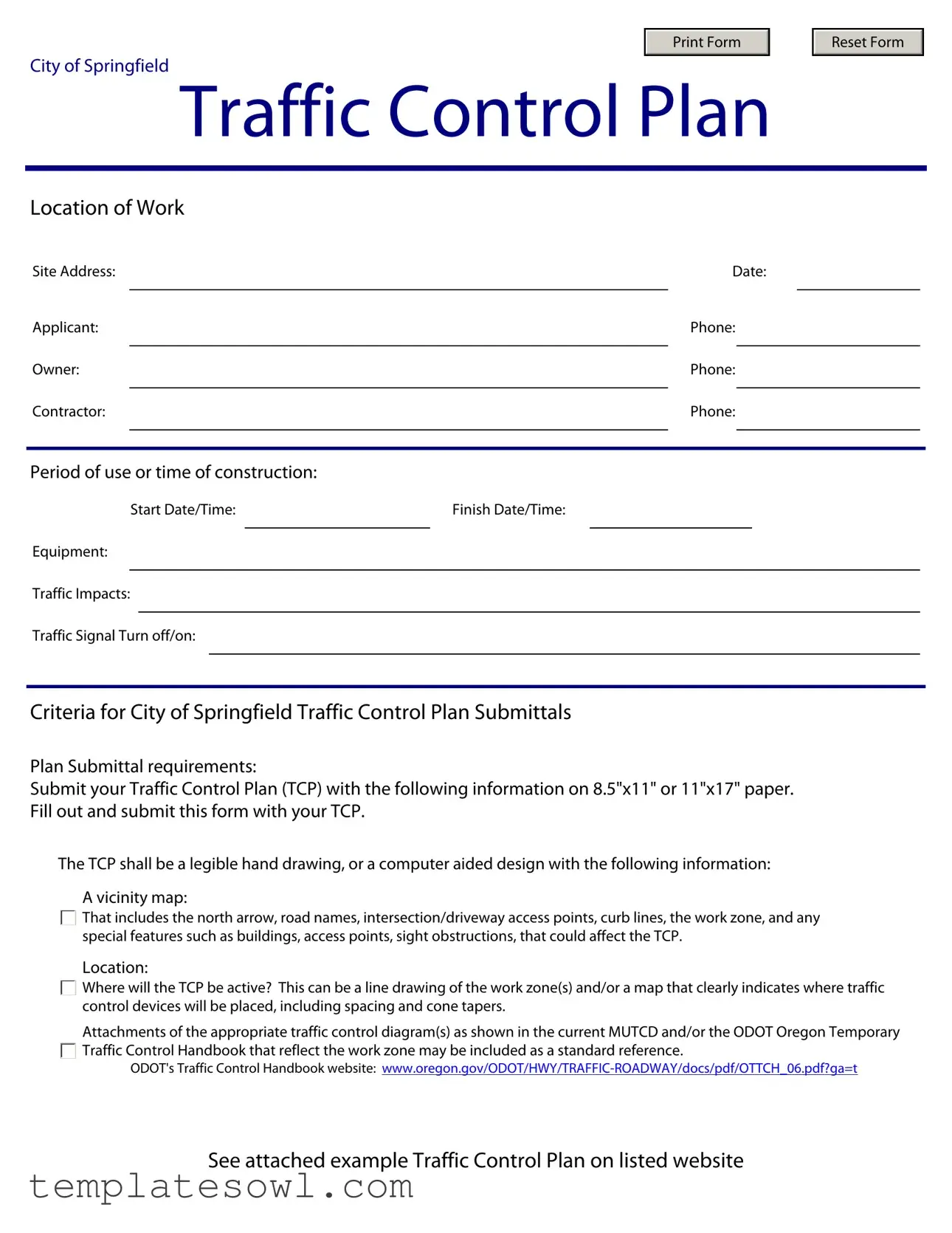Completing a Traffic Control Plan form is critical for ensuring safety and compliance during construction projects. However, many individuals make common mistakes when filling out this form. Recognizing these errors can streamline the approval process and enhance safety on the road.
One frequent mistake is failing to provide accurate contact information. When the applicant, owner, or contractor information is incorrect or incomplete, it can lead to communication issues with city officials. Ensuring that all phone numbers and names are correctly entered is essential for smooth collaboration.
Another common error is neglecting to include crucial dates. Omitting the start date and finish date creates ambiguity about the project timeline. Without these details, city planning departments may struggle to assess potential impacts on traffic and the surrounding community.
Inadequate descriptions of traffic impacts also present a significant issue. If the section detailing traffic impacts lacks specificity, it may not provide an accurate picture of how the project will affect local traffic. Clear descriptions help authorities understand the necessary precautions and adjustments needed to maintain safety.
Some individuals overlook the need for a vicinity map. A clear map that includes a north arrow, important road names, and surrounding features is essential for evaluating the Traffic Control Plan. Failure to include this information can delay the approval process, as officials require a comprehensive understanding of the location.
Moreover, submitting unclear or illegible drawings is a common mistake. A hand-drawn plan must be easy to read, while computer designs must be clear and precise. When plans are not legible, city officials may reject them based on difficulty in comprehension, ultimately prolonging the project’s timeline.
Additionally, not attaching traffic control diagrams from relevant sources, such as the MUTCD or the ODOT Oregon Temporary Traffic Control Handbook, can hinder approval. These resources offer recognized standards that can validate the proposed traffic control measures. Including these diagrams demonstrates adherence to established guidelines and enhances the plan's credibility.
Finally, submitting the Traffic Control Plan on the wrong paper size can cause delays. The form must be completed on specified paper sizes, either 8.5"x11" or 11"x17". Submitting it on a different size can create logistical challenges for city departments managing these submissions.



 That includes the north arrow, road names, intersection/driveway access points, curb lines, the work zone, and any special features such as buildings, access points, sight obstructions, that could affect the TCP.
That includes the north arrow, road names, intersection/driveway access points, curb lines, the work zone, and any special features such as buildings, access points, sight obstructions, that could affect the TCP.
 Where will the TCP be active? This can be a line drawing of the work zone(s) and/or a map that clearly indicates where traffic control devices will be placed, including spacing and cone tapers.
Where will the TCP be active? This can be a line drawing of the work zone(s) and/or a map that clearly indicates where traffic control devices will be placed, including spacing and cone tapers.
 Traffic Control Handbook that reflect the work zone may be included as a standard reference.
Traffic Control Handbook that reflect the work zone may be included as a standard reference.